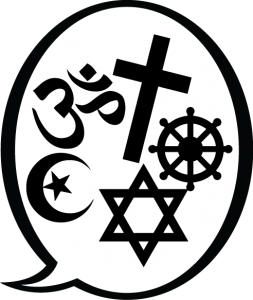By Matthew Brake
As I’ve written before, I have not given up on my Christian faith. In many ways, at least creedally, I think many of my friends and colleagues would find me surprisingly orthodox.
But emotionally and spiritually, I have described myself as a “post-traumatic” Christian, riffing on Grant Morrison’s notion of Batman as a post-traumatic superhero. Morrison’s Batman is “a guy taken to the limits, over the edge” (Meaney, 292), “the man who’s seen it all, done it all, who’s come back, and still, somewhere in his soul he’s dragging out this little last iota of hope” (Talking with Gods).
And this is what my experience in churches has felt like. I told a friend the other day that no one can “cool-church” me back into church. I’ve been to churches with big bands, great preaching, and good community groups. I’ve been to charismatic churches, liturgical churches, and house churches. I’ve been to conservative churches, missional churches, and progressive churches. I’ve been to churches that live in “intentional community” together and churches that serve the poor and marginalized. I’ve been to multicultural churches and intergenerational churches. Big churches and small churches.
You’re not going to surprise me or impress me.
Like Batman at the beginning of Morrison’s time on the character, I’ve seen it all. And like Batman at the beginning of Morrison’s run, I do wonder what it would take to “build a better Batmobile.” What would it take to start fresh and overcome the darkness and cynicism that almost two decades of post-conversion committed church involvement have brought.
Don’t get me wrong. Like Batman, I recognize that all the things that have happened to me in church aren’t entirely everyone else’s fault. I’ve made mistakes. We’ve all made mistakes. But church is an environment that doesn’t always make itself the safest place to move past your mistakes.
But something happens to Batman in Morrison’s run that changes the character and puts him on a trajectory that his own narrow lenses couldn’t have imagined before.
He discovers that he has a son. Then he has an encounter with Evil Incarnate that sends him on a journey of self re-discovery through the past. This journey is like a conversion experience for the Dark Knight. In fact, throughout Batman: The Return of Bruce Wayne, Morrison uses a lot of Christological/Hero’s Journey images of dying and rising again to illustrate Batman’s rebirth.
Like John Wesley at Aldersgate, where the famous founder of Methodism found a rejuvenation for his faith wherein he had a fresh conversion experience that made him go from having the faith of a traumatized slave to that of a loved son, so too Batman comes away from his own experience of rebirth with the revelation that despite all that he’s gone through, he was never alone. He had help. Friends. Family.
Batman overcomes his post-traumatic state and is able to embrace a fresh perspective of his own mission, founding Batman Incorporated, an entire support system around the world for Batman-analogous heroes. He heals from his past pain and approaches his mission with renewed vision and openness to new, more hopeful possibilities of what his mission could become.
But this is not happily ever after.
If Morrison’s Batman teaches us anything, it’s that even when we heal and have our purpose renewed, we will face fresh threats and devastation that may very well bring us back to the lonely place we began.
Morrison’s Batman story ends with Bruce’s son dead, Batman Incorporated dissolved, and Bruce starring at the same yawning hole in his life that he faced at the beginning of Morrison’s run.
Lather. Rinse. Repeat. Ad infinitum.
So I don’t know how to escape the state of post-trauma in my faith. And honestly, there probably is no once-and-for-all escape.
As I and others have noted elsewhere, Batman’s mission is a kind of faith journey. There are a number of points in Bruce’s life that a “conversion” to his mission takes place. Perhaps the moment of conversion is when his parents die and he vows to fight crime. Maybe his true conversion is when he falls into the caves beneath Wayne Manor as a child. Perhaps it’s when a bat breaks into his study in Frank Miller’s Batman: Year One and he utters the famous line, “Yes father. I shall become a bat.” Perhaps like a lot of personal religious journeys, Bruce has multiple conversion and recommitment moments that keep him moving forward with his mission, each providing fresh new insights into the shape his life will take.
And in Morrison’s run, we see yet another conversion/recommitment that provides a fresh perspective on his journey before Batman grows tired and weary yet again.
Perhaps the best that can be said for those who want to remain faithful (to their faith, their mission, or whatever else may define the existential passion of one’s life) can be found in the words of Jim Gordon at the end of Morrison’s Batman Incorporated run:
“We all have our own ways of dealing with grief…. All I really know is this. Batman always comes back, bigger and better, shiny and new. Batman never dies. It never ends. It probably never will.”
Perhaps all we can do is hope to yet again come back stronger, that life and the Divine’s unexpected surprises may provide us with fresh vision, fresh energy, and fresh commitment.
Lather. Rinse. Repeat. Ad infinitum.
Matthew Brake is the series editor of the Theology, Religion, and Pop Culture series from Lexington/Fortress Academic. He is also the co-editor (with A. David Lewis) of the forthcoming Religion and Comics series from Claremont Press.
References
Patrick Meaney, Grant Morrison: Talking with Gods, Sequart Research and Literacy Organization, 2010.

One Comment Add yours